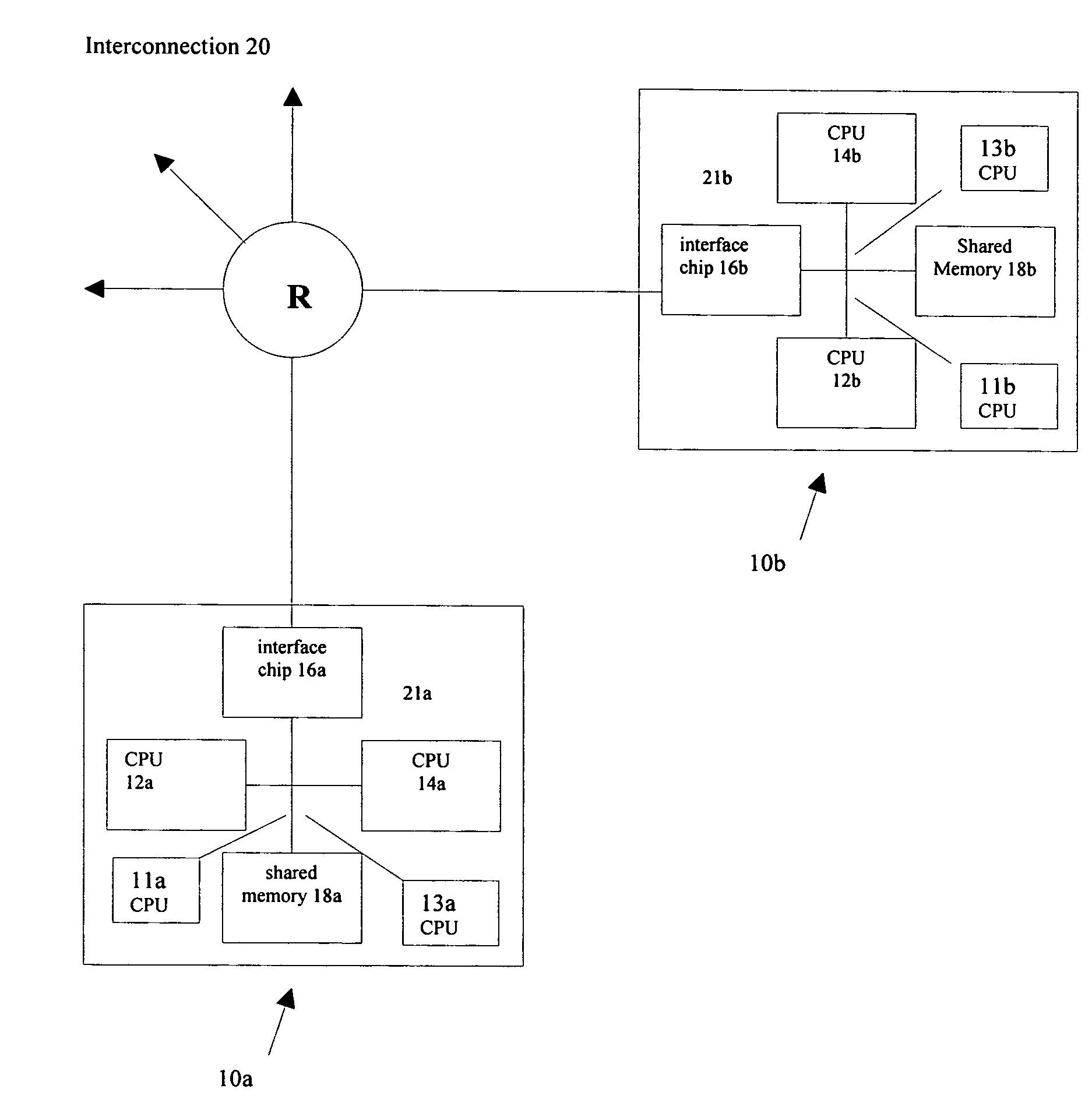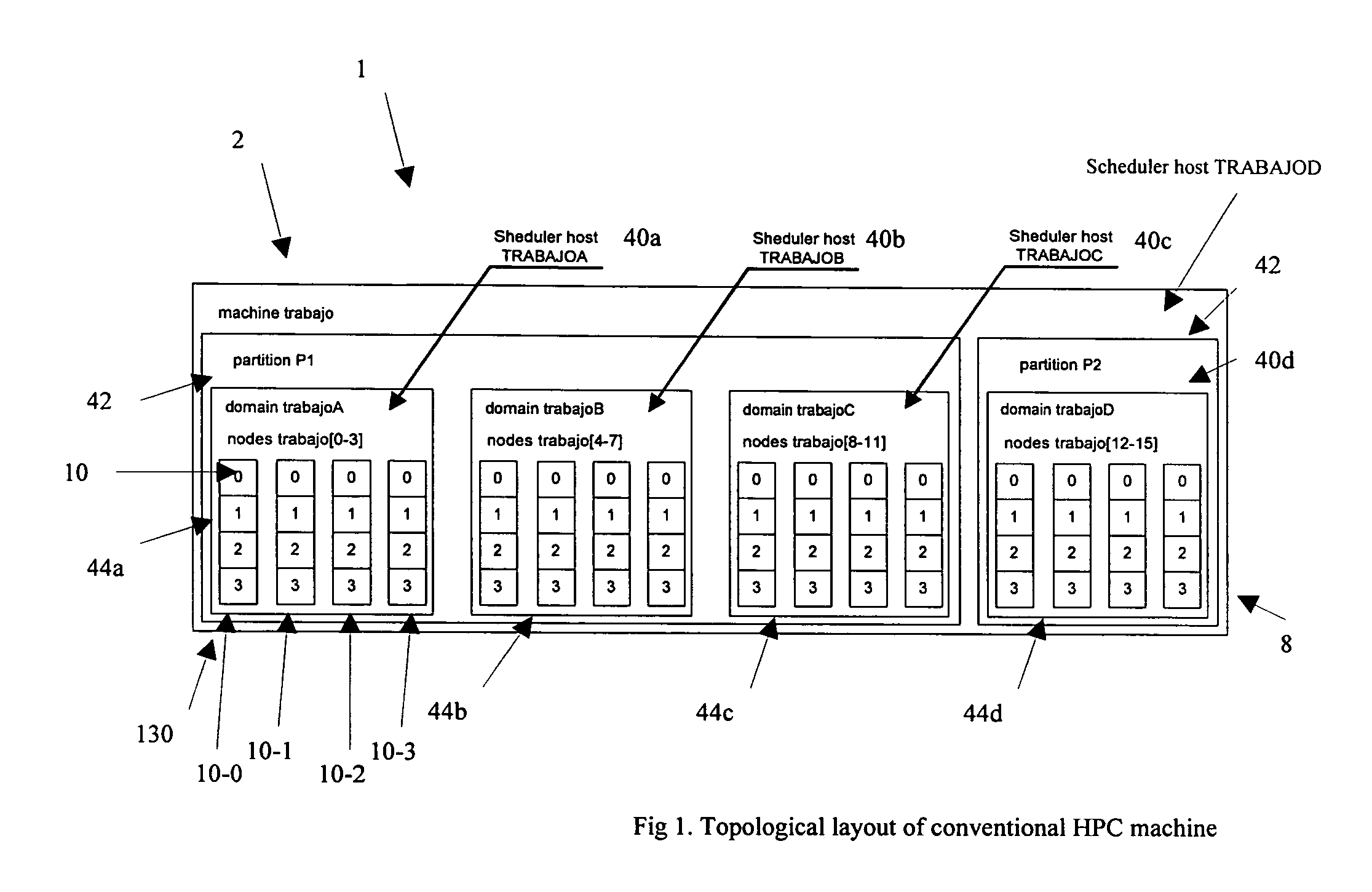Support of non-trivial scheduling policies along with topological properties
a scheduling policy and non-trivial technology, applied in the field of multiprocessor systems, can solve the problems of inability to treat resources on most present high-performance computers (hpcs) as homogeneous resources, processors on different boards cannot access memory on other boards uniformly, and achieve the effect of maximizing the efficiency of the overall machine having topological requirements, satisfactory shape or topological requirements, and efficient scheduling of jobs
- Summary
- Abstract
- Description
- Claims
- Application Information
AI Technical Summary
Benefits of technology
Problems solved by technology
Method used
Image
Examples
Embodiment Construction
[0037]Preferred embodiments of the present invention and its advantages can be understood by referring to the present drawings. In the present drawings, like numerals are used for like and corresponding parts of the accompanying drawings.
[0038]FIG. 1 illustrates the topological layout, shown generally by reference numeral 8 of a conventional HPC machine, shown generally by reference numeral 2 and named, for convenience, “machine trabajo”. The machine 2 is incorporated in an overall computer system, shown generally by reference numeral 1. It is understood that the machine 2 shown in FIG. 1 is merely an example of a machine 2 and the present invention is not limited to use with a machine 2 as illustrated in FIG. 1, but rather could be used with any type of machine 2.
[0039]As illustrated in FIG. 1, the machine 2 may have a number of hosts 40, identified individually by reference numerals 40a, 40b, 40c and 40d, which are labelled as Scheduler host TRABAJOA, Scheduler host TRABAJOB, Sche...
PUM
 Login to View More
Login to View More Abstract
Description
Claims
Application Information
 Login to View More
Login to View More - R&D
- Intellectual Property
- Life Sciences
- Materials
- Tech Scout
- Unparalleled Data Quality
- Higher Quality Content
- 60% Fewer Hallucinations
Browse by: Latest US Patents, China's latest patents, Technical Efficacy Thesaurus, Application Domain, Technology Topic, Popular Technical Reports.
© 2025 PatSnap. All rights reserved.Legal|Privacy policy|Modern Slavery Act Transparency Statement|Sitemap|About US| Contact US: help@patsnap.com



